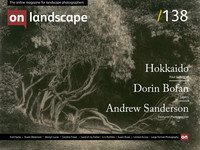Deconstructing the image and using additional layers creatively

Dorin Bofan
Dorin Bofan is a professional photographer specializing in the field of nature and landscape photography. He co-authored the book “Why Photography?” and he organizes nature photo tours all across Europe. His photographs and articles have been published in National Geographic (RO), National Geographic Traveller (RO), Photo Magazine (RO), Foto-Video (RO), GDT Forum Naturfotografie (DE) and whytake.net
I often think of images as parts put together in a visually interesting manner. When the parts come together eloquently, they create meaning and message. So when trying to learn more about why some images work they way they do, I often try to deconstruct the image I’m looking at. I take out the background, the foreground, the subject, the counterpoint, the scheme of colours, the main lines, the type of light and so on. A powerful image stays with and has a deep connection with the viewer. That’s probably because the maker of that image took into consideration every aspect of that image, every bit, every layer.
Of course, there are images where the subject is so strong that the background can be irrelevant. Or there’s no apparent subject at all, it’s just a background, a texture. But even these cases can be deconstructed. You take the colour scheme out, you take the lines in the frame out. You have at least two layers that were carefully bound together to form an abstract interpretation of something. Someone looks at it and sees a human face, a hill, an emotion, whatever. Even a portrait of a person looking directly at the viewer has layers. There’s an obvious subject, but then that face is lit a certain way. So you always have light, natural or artificial, which in portrait photography can be decisive in creating the connection between how the face looks into the camera and what the viewer is making of that specific grimace.
When it comes to nature photography, there can be a multitude of layers forming an image. From the classic wide-angle landscape where the spatial separation of the image into fore-, mid- and background can be deconstructed and formulated into a certain type of composition using leading lines and curves that harmoniously take the viewer through the whole frame. They can have a start point on the brightest area of the image, let’s say, or in the foreground. At the other end of the spectrum, using a telephoto lens can decrease the depth appearance to such extent that the spatial separation becomes non-existent. Still, there are lines, there is colour, there is contrast that can suggest depth. It’s basic stuff that happens here, any landscape photographer composes subconsciously using the basic structure of any image. It’s just a question of geometry, perspective, colour, tonality.
So there are basic layers to each image. They’re obvious, the art comes when the photographer finds the right balance of each layer’s qualities. The graphic side of an image might be stronger if there are more triangles in the frame, or if the colour scheme is in accordance to that of the colour wheel, or if there’s no very bright or very dark surface somewhere in the corners of the image. I know, I’m oversimplifying things, but you get the point. Some compositional choices are better than others because a layer’s quality was used to create visual interest in the way the human brain is wired to tell you it’s of effective use.

